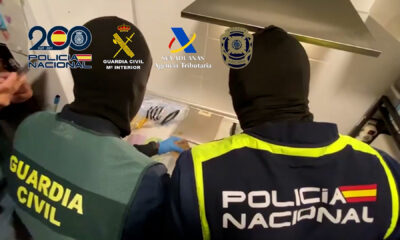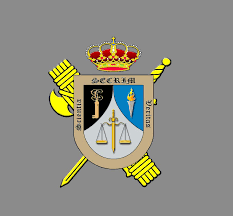

Driving in Spain
How to Act if Another Driver Harasses you on the Road
Road rage or harassment can have serious and sometimes fatal consequences. In an ideal world, we would all drive in a safe, courteous and legal manner, maintaining a safe speed and distance, allowing other drivers to proceed if appropriate, staying Read Full Article…
Road rage or harassment can have serious and sometimes fatal consequences. In an ideal world, we would all drive in a safe, courteous and legal manner, maintaining a safe speed and distance, allowing other drivers to proceed if appropriate, staying calm and concentrating on the task of driving. But, in reality, we don´t live in an ideal world.
All too often we see or experience the same, the bad practices of driving too close, overtaking with hostile and insulting gestures, closing gaps to prevent vehicles from joining the traffic flow in front of us, all of which can be sanctioned with fines, the loss of points and, in the worst cases, even prison, so why does it happen?
Driving can create extreme situations that end in aggressive decisions. Even a simple delay in a car not driving off when the lights turn green can be enough to prompt an aggressive reaction, at least according to a study by Preventis, as if we didn´t know, with a survey of 1,000 drivers, that revealed that 40% of Spanish drivers are very disturbed by traffic incidents and only 17% say they remain unchanged.
Te first and most important advice to avoid being a victim of an escalating incident is to not engage in any way. Avoid eye contact, stay calm, don´t react, and, if possible, leave the road as soon as you can to escape from the situation, stopping and calming down if necessary. Having a passenger note the registration number of the vehicle may prove useful, but not to antagonise the situation, still, do not engage in any way.
You can report the behaviour later to the Guardia Civil, and, if you have dashcam footage for example, you can show that to the officers afterwards, you do not need to engage or get involved at the time, you can report it at the earliest convenience.
In the event of the situation appearing to continue, even though you have tried to escape, you can call for assistance by dialling 112 immediately, reporting your position, but still avoiding eye contact and not engaging with the other people involved.
The Guardia Civil will take action if they feel it necessary, but in any case will at least have a record of the incident should it happen again in the future.
Actions such as insulting other drivers, cutting them up, being immersed in a fight, or crashing into another vehicle and fleeing, are traffic safety infractions covered by the Penal Code.
Specifically, the act of insulting other drivers is a violation as established in article 18 of the General Circulation Regulations, “the driver of a vehicle is obliged to maintain his own freedom of movements, the necessary field of vision and the permanent attention to driving … ». The mild insults are punishable in the criminal code with a fine of 10 to 20 days taking into account the personal and economic circumstances of the defendant, and the non-payment may entail the fulfilment of prison.
Safety distance is key to avoiding most collisions that occur. In addition, according to recent studies, 21% of drivers on Spain´s roads do not respect it.
The regulations explain that the safety distance is that which allows the vehicle to be completely stopped in case of emergency and sudden braking without colliding with the preceding vehicle, taking into account the speed, braking conditions and instantaneous adherence.
The regulations state that every driver must keep a safe distance to stop the vehicle completely in case of emergency without hitting the vehicle in front.
For this space to be correct, we must be aware of traffic conditions that can change constantly and that the same references do not work if driving in dry, wet, with high traffic density, so that the minimum distance varies, without forgetting, of course, the degradation of the tires or the braking system.
In any case, safety distance results from adding two other distances or factors:
- Reaction time: The time it takes from when the driver detects an obstacle until making the decision to brake. In optimal conditions it is usually 0.75 to 1 second.
- Braking distance: The distance the vehicle travels from when the brake pedal is pressed until the vehicle stops. To be as low as possible, we must take the car in good condition, which includes tyres, braking system, cargo, etc. Car maintenance is basic.
In normal circumstances, the trick of ‘half a metre’ can be valid: when we drive behind a vehicle, we will multiply 0,5 for each kilometre per hour we go. This simple operation will give a safe reference in metres. For example, if we drive at 100 km / h, it would be 50 meters that we should maintain approximately.
Another trick is more complex, as we can multiply the number of tens of our speed by itself. That is to say, if we go to 120 km / h we multiply by 12 to obtain 144 metres of distance. As you can see, a slower operation to do it mentally, taking into account the other factors to pay attention to while driving.
However, by far the simplest of all tricks is the ‘two second rule’. It is still not an exact science, and may not allow for precise calculations, but the two second rule is the easiest as you simply need to identify a point of reference for the vehicle in front to pass, and then count at lest 2 seconds until you reach that same reference point. Look out for any fixed object, a tree, a lamppost, a bus stop, and ten when the vehicle in front passes it, say to yourself, “only a fool breaks the two second rule”, calmly and slowly, and if you pass the same point before you have finished the sentence, you need to back off further. Remember, in wet weather, stopping distances are at least doubled, and in icy conditions they could be up to 10 times more.
On the motorways in Spain, it is better to allow for a minimum of 3 seconds, leaving the two second rule for other roads. The simple phrase, “1101, 1102 and 1103”, spoken normally, usually takes 3 seconds to complete. Remember, the more time, the greater the distance, the better.



























